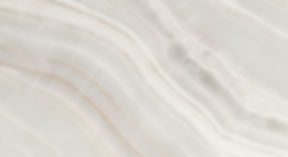
What is a tummy tuck?
Also known as abdominoplasty, a tummy tuck is removal of the lower abdominal excess skin and fat. It also involves tightening the abdominal wall or abdominal muscles to create an internal corset to repair what is called diastasis recti.
This is often paired with liposuction to the upper abdomen, flanks, and even back. It can also be performed at the same time as other cosmetic surgery such as breast surgery, arm lift, or BBL.
Patients with a lot of excess skin particularly after massive weight loss may benefit from removal of skin in the vertical and horizontal dimension called a flour de lis or inverted T abdominoplasty. This leaves you with a scar along the lower abdomen as well as a vertical scar at the midline of the abdomen.
Many patients need a tummy tuck after child birth due to the stretching of the skin and abdominal muscles so therefore this is sometimes referred, in combination with breast surgery, a "Mommy makeover." This does not mean it's limited to women after child birth. It is also necessary after weight loss as skin can not be "tightened" with working out harder. Men also require this operation with excess skin.

This patient is 3 months post op from tummy tuck and arm lift (brachioplasty) with also liposuction to the abdomen and flanks. We are loving the results!
This patient is 3 months out from an extended abdominoplasty with liposuction to the abdomen, flanks, and back. Her shape continues to get better as her swelling decreases... which will continue for at least 6 months!
This patient is 6 months post op from abdominoplasty or Tummy Tuck. She had a very wide diastasis or separation of ab muscles which with repair really improved her shape. She also lost weight in the post op period to further improve her results.
This patient is 6 weeks post op from a "Mommy Makeover" to include a mastopexy (breast lift) with NO implants along with tummy tuck and liposuction to the back, abdomen, and flanks. Her scars will continue to fade over 1 year. Swelling will also decrease over 6 months.






Aesthetic Surgery of the Body
This includes body contouring which removes excess skin and fat from various areas. Common locations for body contouring include:
-
Abdomen (tummy tuck or abdominoplasty)
-
Fleur de lis abdominoplasty (removal of also vertical skin)
-
-
Arms (Arm lift or brachioplasty)
-
Thighs (thigh lift or thighplasty)
-
lower back (Circumferential body lift)
Each of these operations are usually combined with liposuction when necessary.
Liposuction can also be performed alone and in multiple areas when there is minimal excess skin present.
When are these surgeries needed?
We often see patients after massive weight loss when there is significant skin laxity present that will never tighten despite diet and exercise. This can be after pregnancy, weight loss surgery, or simply weight loss with lifestyle modification.
Are there BMI cutoffs for surgery?
The answer is it depends. It is important to be at a stable weight after weight loss (6 months preferred) and to be fully recovered after child birth (at least 6 months).
Although, we do perform liposuction, results are optimal when you are at a healthy, stable weight.
Also to consider is after a BMI of 35, there is an increase in complications with body contouring such as delayed healing, infection, and blood clots, so it depends on other patient factors such as amount of excess skin and weight distribution to make a final decision.
What should I expect with surgery?
We perform all aesthetic surgery in our In-Office surgery center. Depending on the length of your surgery, we may ask that you stay one night in our OverNight Suites adjacent to our office. Here, you will have a nurse care for you until discharge.
Post op, you will have a compression garment such as an abdominal binder or ACE wrap for extremities. This will help with swelling.
You will be expected to walk after surgery with help from our nurse to help decrease your risk of blood clots.
We also provide you with VENAgo a portable DVT prevention device for lower leg compression.


What is Diastasis Recti?
Diastasis recti is a separation of the abdominal muscles as you can see here in this image.
This occurs with pregnancy naturally to make room for the baby. Sometimes the AB muscles will return to normal position with exercise or physical therapy; however, in MANY cases especially with multiple pregnancies, the AB muscles never return to normal and must be surgically repaired.
Repair of diastasis is performed during abdominoplasty when present to tighten the abdominal wall. This actually not only helps with the aesthetic contour, but it also helps with core strength, urinary incontinence, and quality of life.
See scientific article here:
Do I need a Tummy Tuck?
Although all bodies are beautiful and often tell the story of the creation of our precious babies, the results of aging, weight loss, and pregnancy leave the abdominal wall with skin that will never tighten and (see above) Diastasis recti.
The photo above shows skin that is loose with a diastasis and also distorted belly button. The only way to correct this amount of loose skin is removal with surgery. If you desire improvement in excess skin and restoration of abdominal wall strength and function, you need an abdominoplasty (aka Tummy tuck).







